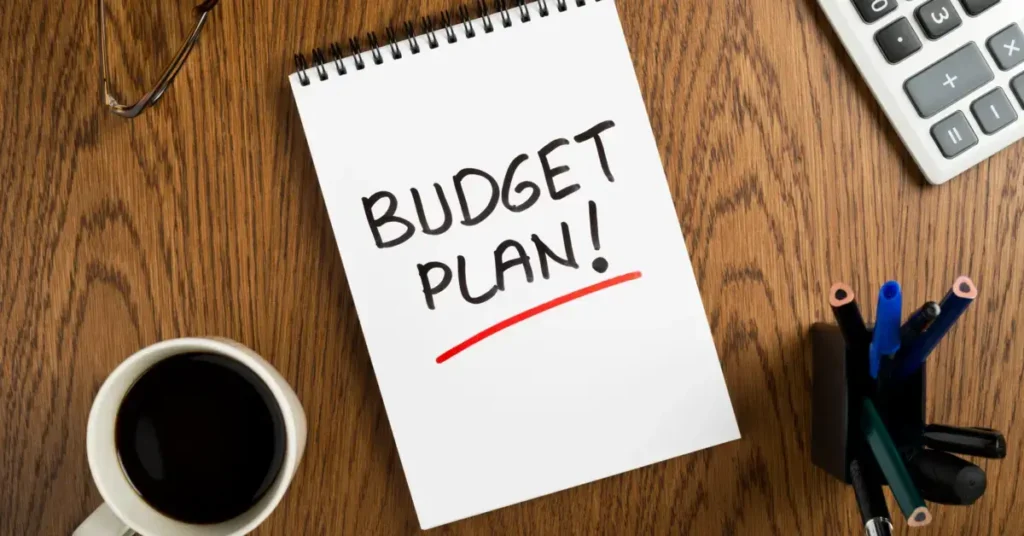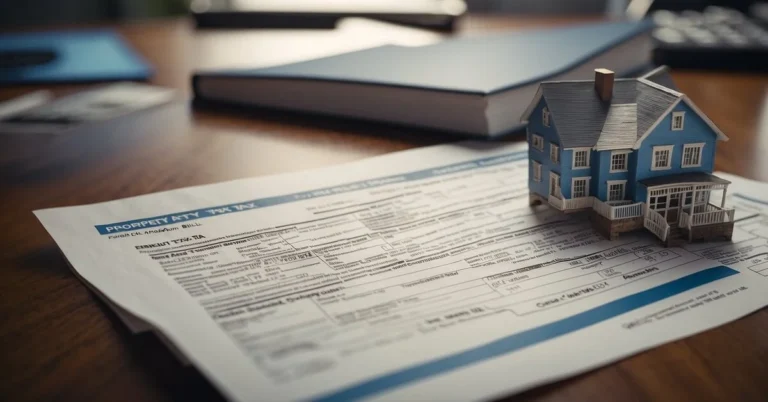A budget worksheet for teenagers can be a game-changer in managing their finances. They start turning the daunting task of money management into a manageable one. It helps them understand their financial situation, promoting independence and responsibility. More than just tracking income and expenses, it’s about setting and achieving personal financial goals. This tool makes it easier to control spending and helps them to make smart decisions with their money, laying a solid foundation for financial savvy in adulthood.
Understanding Budgeting Basics
I think that getting the hang of a good budget worksheet for teenagers can set the stage for a lifetime of healthy money habits. Let’s dive into why budgeting matters and some key concepts to know.
Why Budgeting Is Important
For starters, budgeting is a vital skill that teaches me discipline and foresight when it comes to managing my finances. Learning to budget helps me distinguish between wants and needs, ensuring I prioritize essential expenses. That is why I believe budgeting can be good for your teens.
Budgeting Concepts And Terminology
To effectively manage funds, you need to familiarize them with some basic terminology. Here’s a quick rundown:
- Income: This is the money I receive, whether it’s from a part-time job, allowance, or gifts.
- Expenses: These are the costs I incur, including both necessities and leisure activities.
- Fixed expenses: Bills that don’t change from month to month, like subscription services.
- Variable expenses: Costs that can fluctuate, like eating out or gas money.
- Savings: The portion of my income that I don’t spend but save for future use.
By using a budget worksheet, they can track these elements and make sure they are not spending more than they have. It’s a practical tool that helps teens set clear boundaries and targets for their spending and saving.
Setting Up Your Budget Worksheet for Teenagers

Creating a budget worksheet for teenagers is a fantastic way for them to manage their finances early. It provides a clear picture of income and expenses, helping to foster responsibility and financial literacy.
Choosing the Right Tools
When you start to create your teen budget worksheet with them, the first step is to choose the right tools. There are many printables available online that make the process easier. For me, these printables offer a structured way to track my expenses and income without getting overwhelmed. I can typically find a variety of options tailored to different budgeting styles, so whether I prefer a digital spreadsheet or a printable PDF, there’s a tool out there to meet my needs. So there probably is one for your needs as well.
Categories to Include in a Budget
In my worksheet, it’s essential to include key categories to ensure nothing gets overlooked. Here’s a basic table of categories I make sure to include:
| Income | Fixed Expenses | Variable Expenses |
|---|---|---|
| – Job earnings | – Savings | – Food |
| – Allowance | – Phone bill | – Entertainment |
| – Subscription fees | – Personal shopping | |
| – Transportation | – Miscellaneous |
Income like my job earnings and allowance goes in the first column, while fixed expenses such as savings and my phone bill are listed in the second. Finally, variable expenses like food and entertainment are in the third column. By breaking it down this way, I can see where my money is coming from and where it’s going, which helps me plan and save better.
Income Sources for Teenagers

Creating a “budget worksheet for teenagers” starts with understanding where the money comes from. As a teenager, you have several avenues to earn money that you can manage and grow.
Part-Time Jobs
Part-time jobs are a staple for earning as a teenager. From retail positions to food service gigs, I’ve found these roles not only provide a steady income but also teach valuable work skills. Here’s a glimpse at common part-time jobs:
- Retail Worker
- Fast Food Employee
- Babysitter
- Tutor
Other Money-Making Opportunities
Beyond formal employment, Other Money-Making Opportunities can boost your income. Whether it’s taking on odd jobs like lawn mowing or pet sitting, or receiving cash gifts on special occasions, these sources also play a part in your budget:
- Allowances for household chores
- Gifts for birthdays or holidays
- Selling items online
- Freelance work relevant to your skills (e.g., graphic design, writing)
Recording and Tracking Expenses

When you start using a budget worksheet for teenagers, understanding the difference between various types of expenses and knowing how to prioritize them is crucial. This is where recording and tracking each expense plays a vital role.
Fixed vs. Variable Expenses
Recording expenses is straightforward when you categorize them. Fixed expenses are those you pay the same amount for each month. For me, that’s things like my car insurance; I know exactly what I’ll pay every month, so it’s easier to plan for. On the other hand, variable expenses can fluctuate. For example, my smartphone data plan might vary if I use more data in one month. I keep a close eye on these by checking my bills regularly to avoid surprises.
- Fixed Expenses:
- Car Insurance: $100
- Subscription Services: $25
- Variable Expenses:
- Smartphone Data Plan: $45 – $60
- Gas: $30 – $100
Prioritizing Your Spending
After tracking, understanding how to prioritize is the next step. For me, essentials come first. That’s my fixed expenses like the car insurance. But then, it’s about making choices. Do I need that extra data, or can I stick to Wi-Fi? Is there a more affordable plan? Grasping the importance of prioritizing helped me manage my teenage expenses without overstretching my wallet.
- Essentials: Car Insurance, Basic Phone Plan
- Nice-to-Have: Extra Data, Entertainment
By recording and categorizing expenses into fixed and variable, and then prioritizing them, you will be able to take better control of your finances with the help of a budget worksheet for a teenager. It’s all about making informed decisions and staying on top of your spending game.
Savings Strategies for Teenagers

When you first start using a budget worksheet for teenagers, you will quickly realize how vital it is to pair it with effective savings strategies. This approach transforms how you manage money and sets the foundation for financial independence.
Setting Savings Goals
My journey taught me that setting clear savings goals was the first step toward financial security. Whether it’s for a new gadget, college funds, or just a safety net, having specific targets makes saving less of a chore and more of a rewarding challenge.
- Short-Term Goals: An immediate purchase, like a concert ticket.
- Long-Term Goals: Larger, future expenses such as going to university.
Tools to Help You Save
To stick to these goals, I discovered several tools and methods that make saving money easier and more consistent.
- Budget Apps: Digital tools track my expenses and categorize them, making it easier to identify where I can cut back.
- Automatic Transfers: By setting up automated transfers to my savings account, I ensure I save a portion of my income regularly without even thinking about it.
Practical Tips for Everyday Budgeting

When it comes to managing money, having a budget worksheet for teenagers is like having a roadmap for your spending and saving. It’s crucial to know where your cash is going every day and how to handle those recurring and unexpected expenses.
Managing Recurring Subscriptions
Every month, like clockwork, those subscription services take their slice of your wallet. It’s easy to sign up for a streaming service to catch the latest movies, but it’s equally important to regularly review what you’re subscribed to. Here’s what I do:
- List out all subscriptions: This includes Netflix, Spotify, gaming services, and others.
- Check usage: If you haven’t watched anything on a service for a month, it’s maybe time to cancel.
- Set reminders: Before free trials end or renewal dates arrive, always set an alert.
Handling Unexpected Costs
Life throws curveballs, and sometimes those come with costs. Here’s my approach:
- Emergency fund: I set aside a little from my allowance or job each month into a fund just for surprises.
- Reassess budget: If an unexpected cost does come up, I revisit my budget worksheet to adjust for the month.
Preparing for Future Financial Goals
When it comes to managing money, having a solid budget worksheet for a teenager is crucial for setting the stage for future financial success. It helps outline goals and track progress over time.
Budgeting for College
College costs: Understanding the extensive expenses associated with college is essential. I not only consider tuition but also books, housing, meals, and personal expenses. Here’s a sample budget for 18-year-olds I find particularly useful:
| Expense Category | Estimated Cost |
|---|---|
| Tuition | $10,000 |
| Books & Supplies | $1,200 |
| Housing | $8,000 |
| Meals | $3,000 |
| Personal | $2,000 |
| Total | $24,200 |
By outlining each cost, it’s easier for you to save accordingly during your high school years. Adjustments can be made depending on scholarship awards or changes in living arrangements.
Budgeting for Large Purchases
For significant expenses like a car or first apartment, lay out a budget cycle that aligns with your savings capacity. Whether on a weekly or monthly basis, track every expense to ensure you are on course to meet your purchase timeline. Here’s an example of a savings strategy:
- Initial Cost: Estimating the upfront cost of the purchase.
- Savings Goal: Calculate how much you need to save each month to make the purchase.
- Tracking Progress: Regularly update your budget worksheet to reflect your savings growth.
Using a budget worksheet for a teenager may empower you to plan for substantial future purchases methodically and responsibly. It transforms daunting financial goals into achievable milestones.
Frequently Asked Questions
How should an 18 year old budget?
At 18, I recommend starting with tracking income and expenses to understand where money is going. It’s crucial to categorize spending and savings, and aim to set aside a portion of any money you receive, whether it’s from a job, allowance, or gifts. A balanced approach would involve covering essentials, setting savings goals for larger purchases or education, and remembering to allocate money for leisure, reflecting responsible personal financial planning.
What is the 50 30 20 rule?
The 50 30 20 rule is a simple budgeting guideline that suggests spending 50% of your after-tax income on necessities, such as housing and food; 30% on wants, like entertainment and dining out; and putting the remaining 20% towards savings and debt repayment. Applying this rule can provide structure to my budget and help me prioritize financial stability and goals.
How do you make a simple budget worksheet?
To create a simple budget worksheet, first I list my monthly income sources. Then, I track all my expenses, dividing them into fixed (like rent) and variable (like groceries) categories. By subtracting the total expenses from my income, I can see what is left for savings. To keep it organized, I like using a spreadsheet or a free budget worksheet customized for teenagers, which can simplify the process and ensure that I’m not overlooking any expenses.
I hope you found some inspiration or useful tips in our article on ’budget worksheet for teenagers’! If so, I’d love to hear your thoughts and ideas in the comments below! And if you’re looking for more insightful content, don’t hesitate to explore our other articles:
- Budgeting Behavior: Master Your Finances With Simple Changes
- How To Financial Life Planning In 15 Easy Steps
- 20/40/60 Rule: Simplifying Life Decisions
- Budget Basics: Simple Tips For Managing Your Finances
So start budgeting with your teens for their first steps. Happy reading!






